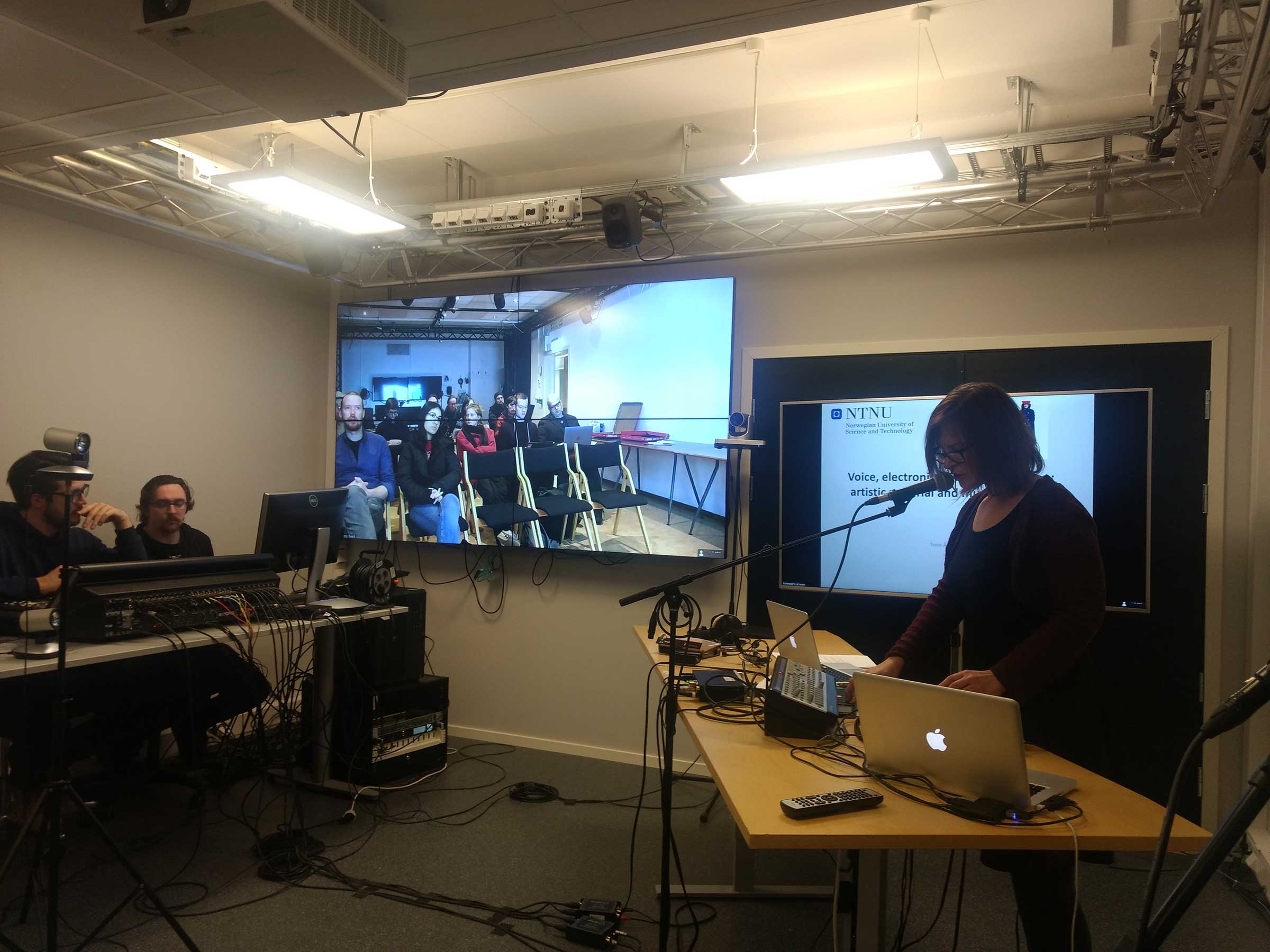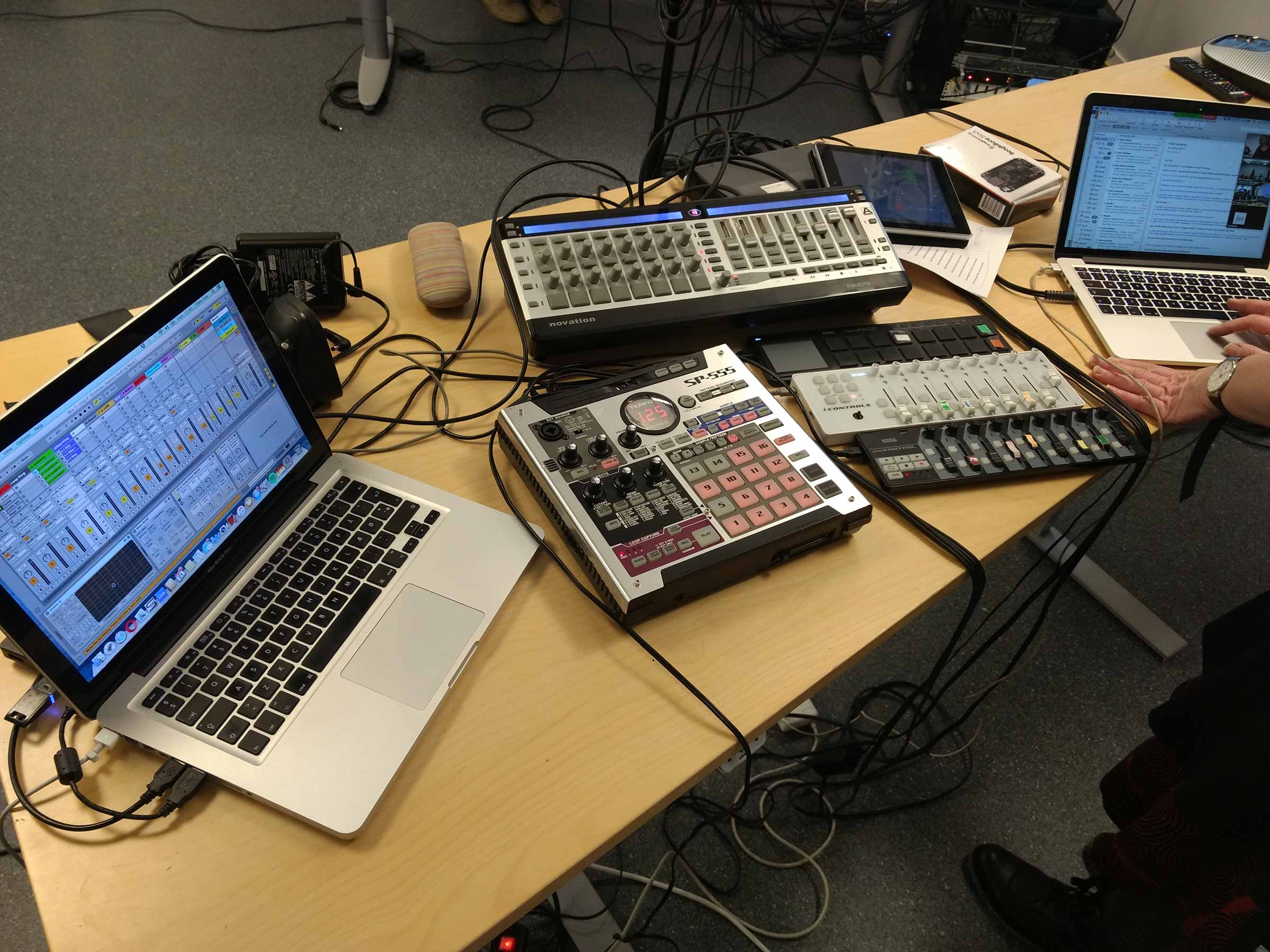An Interview with Tone Åse
What is your background?
When I was 20, I did not know anything about music theory, I just loved singing and I never thought I could become a musician. I finally attended a music program for teachers and had to start from scratch, learning theory and so on. I went to Northern Norway for teaching and continued my education in Tromsø Conservatory as a part-time student. There I met some great musicians from Trondheim who played at the local jazz club, and after the gig I asked them about the Conservatory (which is now a part of NTNU). I ended up doing my last classical year there, while also getting lectures in improvisation from John Pål Inderberg, a teacher at the Jazz Department. The meeting with improvisation changed everything, and I stopped working with classical music. After a master’s degree in musicology, focusing on improvisation, and several years as a freelance musician and teaching, I did an artistic PhD in voice and live electronics.
What brought you to the field of music technology?
I started using electronics when I heard other musicians processing their sound, trumpeters in the Norwegian jazz scene like Nils Peter Molvær and Arve Henriksen, but also the singer Edlbiørg Raknes. I started with a simple reverb, a used guitar effect machine and a Jam Man looper. I discovered that the electronics could be a tool to be able to blend into the other instruments, and also to take on different roles in the interplay. The electronics provided a new freedom for me as a vocalist.
What are your experiences being a woman in the music technology field?
Among other musicians and technologists, I have always felt respected for what I do - or at least if they like my work, not everyone does, of course. When I have felt some friction related to my use of technology, it has rather been connected to the fact that I am a singer. As long as you have a voice present at stage, some people can be disappointed when you do not look them in the eyes and sing melody and text, which I can understand because that is what you are used to get.

Please introduce more closely your piece of work/research
I work with speech and live electronics and improvisations in different constellations. As an artistic researcher, I have explored how the live electronics can create new roles for the vocalist in the improvised interplay. I have a duo with a drummer, Voxpheria, a trio/quartet with drums and synthesizers, BOL and I’ve just started composing music for a piece about witch-hunting in Northern Norway in the 1600’s, a long-term project. I also teach improvisation and vocals. I love teaching, it is very inspiring to learn from different discussions and focuses among the students. In 2018 I made a commissioned work for a vocal ensemble from Oslo called Oslo 14.
What motivated you to do this piece of work?
I was occupied with the idea to connect ambient noise and music. When you concentrate on what is audible around you, you experience an awareness of the moment and of who and where you are, in whatever space you taking part in. The Oslo 14 ensemble asked me to write music for them and I found this would be a great opportunity to work with sound that the ensemble members hear in their daily lives and abstract developments of it.
What methods did you use to conduct the work?
I collected various sounds from the 13 singers. Foe example sound of a tram passing a window, a heater, the keys in the hallway, a refrigerator… I tried to mimic the quality of this specific piece of sound with my voice, process it, improvise it and see what happens. And if an idea came up, I could use it as a main theme, a starting point, or an underlying layer, and it might grow into more conventional music, with melodies and rhythms.
What kind of technology you use?
When it comes to technology, I have a simple approach. I use a laptop (MacBook Pro), a DAW (Ableton M4L), a sound card (REM), and I am very enthusiastic about using MIDI controllers, especially with faders and pads. There is this tactility and, with faders you also get a visual impression of levels that helps the brain to ‘think’ dynamics. I also use a Roland SPX 555 sampler because it is so tactile and has some other opportunities through the pads and an infrared filter control. In this composing process, it is important to use Ableton as a tool for trying out and archiving ideas. It is good to have a tool that is not linear, you can easily play around, improvise, and put the material together in new ways.

What is the follow up of this piece of work?
It was recorded, but since I’m not a mixer it has to be done together with someone who knows how to handle it and can work closely together with me. So I’m just waiting for the funding. In post-production, I can feel free to manipulate the live recording to some extent. I’m really looking forward to this progress, I just will have to find the money and the time.
What advice would you give to women interested in pursuing a career in music technology?
A career in music technology could be so much. If you want to work with a (technical) instrument, don’t think you have to master everything before you start, like reading the whole manual or knowing the function of absolutely everything. Start with something simple and see where it leads you to. If I heard something that appealed to me I had to try it out like Laurie Anderson’s “Oh Superman”, the merged sound of voice and electronics just struck me deep. And also Zavinul Syndicates ‘You Understand’ with the Vocoder. The motivation should come from a genuine attraction, not from thinking that it is smart or hip. Look for something you really like, find out what equipment is used, what effects and techniques. Try it out and take your time. Borrow from someone or borrow from the shop if you have a nice one.
In my experience, when one speaks of woman and man in this form, women often think far ahead. Men are better at experimenting for the sake of experimenting. While women see some kind of obligation to achieve a result. This is speculation, however in the playful and experimental, something arises. It will not explode or break. You may have some feedback problems, so you should learn to stay close to the master knob (laughing).
You mentioned Laurie Anderson, did you have other role models?
Yes, she was so early and so brave, combining experimental, meaningful and political ideas with the playful. There’s also Elin Rosselan, a fantastic singer, improviser and composer, not much into electronics anymore, but she is really one of my favorites. Maja Ratkje, who works with noise, improvisation and voice, we are very different, but she is very strong and inspiring. American experimental artists like Meredith Monk, Cathy Berberian, Amy X Neuburg, Pamela Z, and of course improvisers as Eldbjørg Raknes as I mentioned earlier, and Sidsel Endresen. And then people with whom I played together, like my husband Stole Storløkken, a fantastic musician, I learned a lot from him, you could also call him one of my mentors. He built me a compressor for Christmas, welcome to the nerd family!!
Do you want to add anything else or have a comment?
I have worked with an improvising vocal ensemble, Trondheim Voices for many years, where I was the artistic leader from 2006-2011. I had a vision of making it possible for the ensemble to work with live electronics, and this happened gradually. I am very happy that we took this step. It’s interesting to see how the roles of the singers have evolved and the roles of the sound designer, Asle Karstad, because he built a controller for us. Now we and the sound designer are talking about music together that we couldn’t have discussed before. We’ve expanded the concept of the vocal ensemble.
